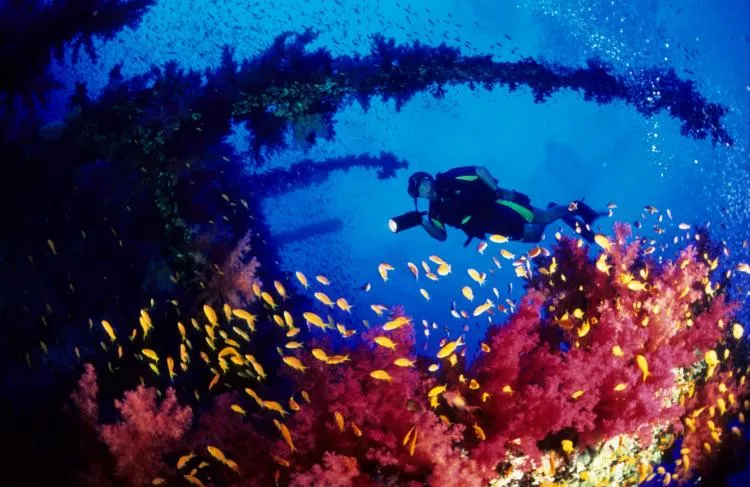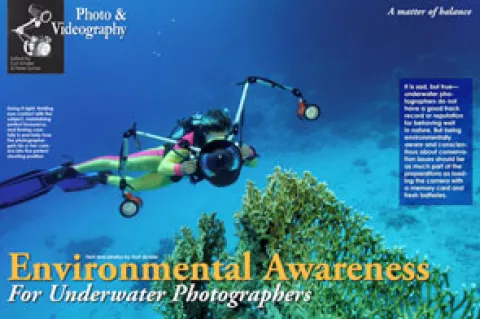It is sad, but true—underwater photographers do not have a good track record or reputation for behaving well in nature. But being environmentally aware and conscientious about conservation issues should be as much part of the preparations as loading the camera with a memory card and fresh batteries.
Contributed by
The underlying fundamentals for underwater photography is mastering the basics of diving. In order to obtain good photographs, it is paramount to be able to control buoyancy.
Mastering hovering is, essentially, down to what we were taught in our first diving course. It just seems that quite a lot of divers do not remember, or worse still, were never taught properly how to be in control their buoyancy. So, let’s start with a short recap. If you are fully equipped with an empty jacket, drifting vertically in the water, the water surface should be, while normally breathing, at the level of your mouth. Once you exhale deeply, you should slowly begin to sink.
Trim
To find the perfect pose underwater for photography, it is of the utmost importance that two criteria are met:
- Your weights must be distributed correctly, and
- your jacket must fit snugly. It may sound silly, but if your jacket is just a little bit too big, it will move around and make it quite difficult to obtain and maintain neutral buoyancy.
For underwater photographers, wing jackets with integrated weights seem to be the most suitable buoyancy system. Their lifting body surrounds the tank at the back of the diver. That creates a constant and firm dive position.
Also, the depth gauges and hoses should be tucked in and fixed close to the body, so that they will not dangle and damage the reef. What is of importance to divers in general also applies to those handling camera-equipment. Experience shows that the complete photographic equipment system should not have more than 250 grams of negative or positive buoyancy.
Procedures
Most of us have witnessed the following scenario: An underwater photographer has made his shot, and then, with two or three sudden fin kicks, turns around hunting for the next subject. Unfortunately, in doing so, he also manages to kick up a lot of sand and sediment and chase away the fish, leaving nothing to be seen for other members of the dive group! It’s necessary to show consideration towards both the environment and your fellow divers, not just be fixated during those important moments on getting close to the subject. It is of equal importance to think about how to get away in an orderly and smooth manner once the shot is taken.
In this regard, wide angle photography is easier to deal with. It is more of a challenge for macro photographers, who need to remain steady on the reef to avoid camera shake. To avoid damaging the reef, the photographer should take a lot of care in regards to where and how to touch the reef. To obtain the smallest possible contact with the reef, the photographer should use the so-called “finger grip” (images next page) to stabilize his position.
After the shot, it is easy to push oneself back into the free water without using the fins. Another way to leave the subject is to use lift. Just take a deep breath or inflate your jacket, remain still and be happy about your shot while you drift clear of the reef. ...
( ... )





























